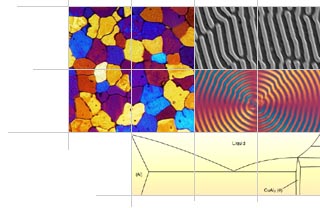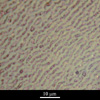Micrograph Library
Browse the libraryAdvanced searchSystemsCompositionsTechniquesKeywordsPhase diagramsHelpPreferencesAbout the micrograph libraryTerms of useContribute micrographs!FeedbackLinksCredits Print this page

Full Record for Micrograph 557

[84 KB]
View micrograph
.. in new window
View micrograph and record
.. in new window
You can also view and download the micrographs on Flickr
- Micrograph no
- 557
- Brief description
- High Impact Polystyrene (HIPS)
- Keywords
- blend
 , composite material
, composite material  , high impact polystyrene (HIPS), phase inversion, polybutadiene (PB), polymer
, high impact polystyrene (HIPS), phase inversion, polybutadiene (PB), polymer  , polymer composite, polystyrene (PS), rubber
, polymer composite, polystyrene (PS), rubber  , rubber-toughened polymer, tough
, rubber-toughened polymer, tough - Categories
- Composite, Polymer, Polymer composite
- System
- High Impact Polystyrene (HIPS)
- Composition
- PS - 15%PB
- Standard codes
- Reaction
- Processing
- Applications
- High Impact Polystyrene (HIPS) is a classical example of a rubber-toughened polymer. Among its applications are riot shields and shatterproof rulers
- Sample preparation
- The specimen has been stained with ink to reveal the rubber phase
- Technique
- Transmitted light microscopy
- Length bar
- 10 μm
- Further information
- High impact polystyrene (HIPS) or 'rubber-toughened polystyrene' is a two-phase mixture of polybutadiene (a synthetic rubber) in polystyrene. The two phases are immiscible, with polybutadiene crystallising out of the melt to form spheroidal particles. In fact, polystyrene is the first phase to crystallise, forming even an even finer dispersion of polystyrene particles which become trapped within the polybutadiene when a phase inversion occurs at around 10% solidification.
- Contributor
- J A Curran
- Organisation
- Department of Materials Science and Metallurgy, University of Cambridge
- Date
- 03/10/02
- Licence for re-use
 Attribution-NonCommercial-ShareAlike 4.0 International
Attribution-NonCommercial-ShareAlike 4.0 International

